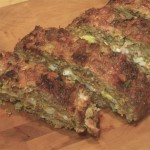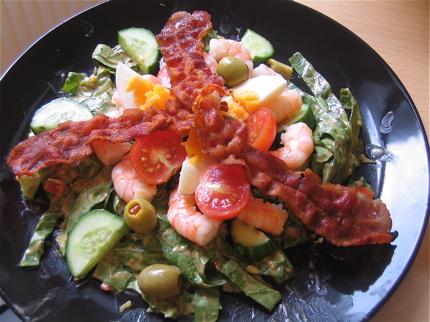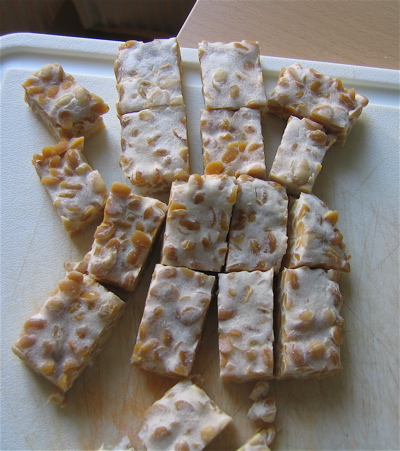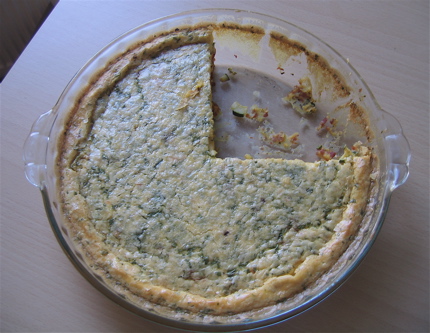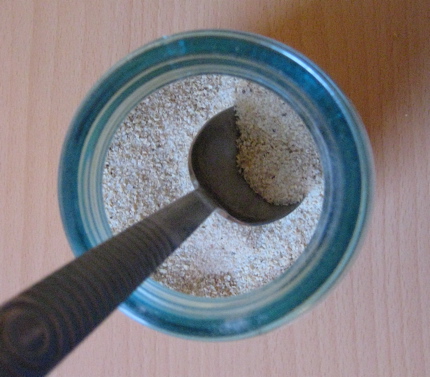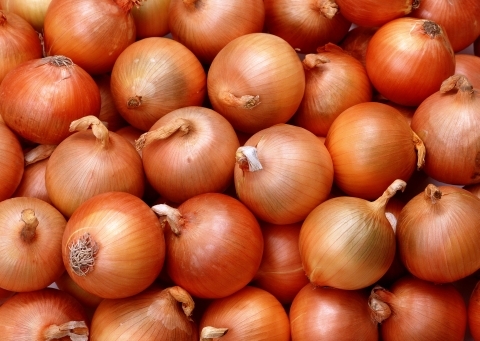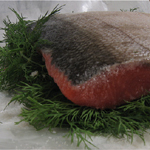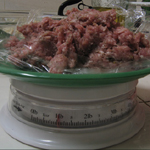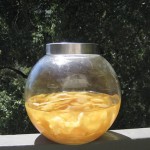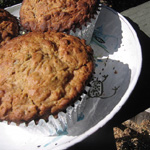Blood Orange Marmalade with Rosemary
Adapted from The Herbfarm Cookbook by Jerry Traunfeld2.5 lbs blood oranges
2 large meyer lemons
6 cups cold water
8 cups sugar
6 6-in sprigs rosemary, wrapped in a single layer of cheesecloth and tied with twineSpecial Equipment:
6 pints worth of canning jars (I used three pint jars plus 6 half-pint jars), and corresponding two piece lids
2 large potsThoroughly wash oranges and lemons. Slice in half vertically, place cut side down, then slice into thin (1/16th inch) half moons. Remove seeds as you come across them. Place slices in a large pot and cover with the water. Let soak at room temperature for 12 to 24 hours. (This releases the pectin and softens the rind)
The next day, bring the pot to a boil and boil steadily for 30 minutes. Stir in the sugar and rosemary bundle and cook at a steady boil until the mixture has softly gelled (To check this, put a small plate in the freezer to chill. Once the plate is cold, drop about 1/2 t of the jelly onto the plate and place in the refrigerator for 1-2 minutes. Remove the plate from the refrigerator and push the top of the jelly with your finger; if it wrinkles, it is ready; if it stays smooth, then continue to boil). Note: keep an eye on the pot so that it does not boil over
Meanwhile, sterilize the jars by placing them in a large pot of boiling water for 10 minutes. Sterilize the lids and bands by dropping them into the boiling water for the last two minutes of the boiling. Remove from heat, but leave jars and lids in water until ready to use. Then, remove from water and drain.
Remove rosemary bundle from marmalade. Ladle the hot marmalade into the canning jars, filling about 1/4 inch from the top. Place lids on top of jars and screw bands on until finger tight. Flip jars over onto a clean towel and allow to cool undisturbed. When the jars have cooled, check that each has sealed properly (there should be no give in the center portion of the lid). If any jars did not seal, place in the refrigerator. The sealed jars will keep for many months.
(Note: you may need to sterilize the jars in batches unless you have a very large pot. To do this, boil as many jars as will fit in the pot. Remove, and place in a sink full of very hot water until ready to use. Repeat until you’ve sterilized all of the jars and lids)
* * * * * * * * * * * * * * * * * * * * * *
Citrus season is nearly always bountiful around northern California. On the days that I ride my bike to work I count no fewer than 30 orange and lemon trees drooping under the weight of their own fruit. Once I was tempted to pull over and grab a few oranges from a tree on the side of the road that didn’t really seem to belong to anyone, but as I slowed my bike I saw that many other people had had the same idea, and there were no oranges within reach.
But even though I wasn’t able to gather any fruit from this orphaned tree, I was lucky enough to get nearly 10 pounds of homegrown blood oranges from a coworker, plus nearly as many meyer lemons from my neighbor! First I made Moroccan Salt-Preserved Citrus, then decided to try my hand at marmalade making.
With my first foray into preserve making, I wasn’t sure what to expect. Things like the size, juiciness, how much pith is present, and sugar content all affect both the process and final outcome of your marmalade; if the liquid to solid ratio is low (i.e. small fruits, more pith and rind, etc), then gelling will happen sooner; if the sugar content is very high, then you might not want to add so much sugar (and vice versa with low sugar content); high sugar content can also affect gelling time. This is why its important to closely watch your boiling marmalade and do the described ‘wrinkle test’ often. Otherwise you can end up with rubbery marmalade.
Even with all the unknowns, this marmalade turned out wonderfully! It is on the bitter side, and the hint of rosemary ensures that this is definitely not dripping-with-sugar-and-so-sweet-you-can’t-stand-it. Instead, it is pleasantly bitter with an herbacious undertone and an almost apple-butter-like texture. Besides the typical toast topping, I’ve been enjoying it a few other ways
– Added to a bowl of steel-cut oatmeal along with a dollop of maple syrup
– Thinned and heated with some chicken stock as a topping for grilled or pan-fried chicken
– Thinned with a little rice vinegar and soy sauce and used as a glaze for baked salmon
– Mixed with good ricotta for a dressed-up toast/cracker topping
For me, the hardest part of marmalade making was actually sterilizing the jars — in my tiny kitchen I only have one big pot (which isn’t even all that big), which I needed to be using both for the marmalade itself, as well as the jar sterilization. I ended up using a smaller pot for the jars, and then dropping the sterilized jars into a sink filled with very hot water. I believe you can also use a dishwasher to sterilize the jars, but it’s recommended that you process the jars in boiling water for 10 minutes or so if you go this route. If you’re a seasoned jam maker or canner, I’d love to hear your tips and tricks!
« Coffee Companion, aka Homemade Coffee Mate | Home | Springtime Vegetable Tart with Peas, Asparagus, and Basil »
